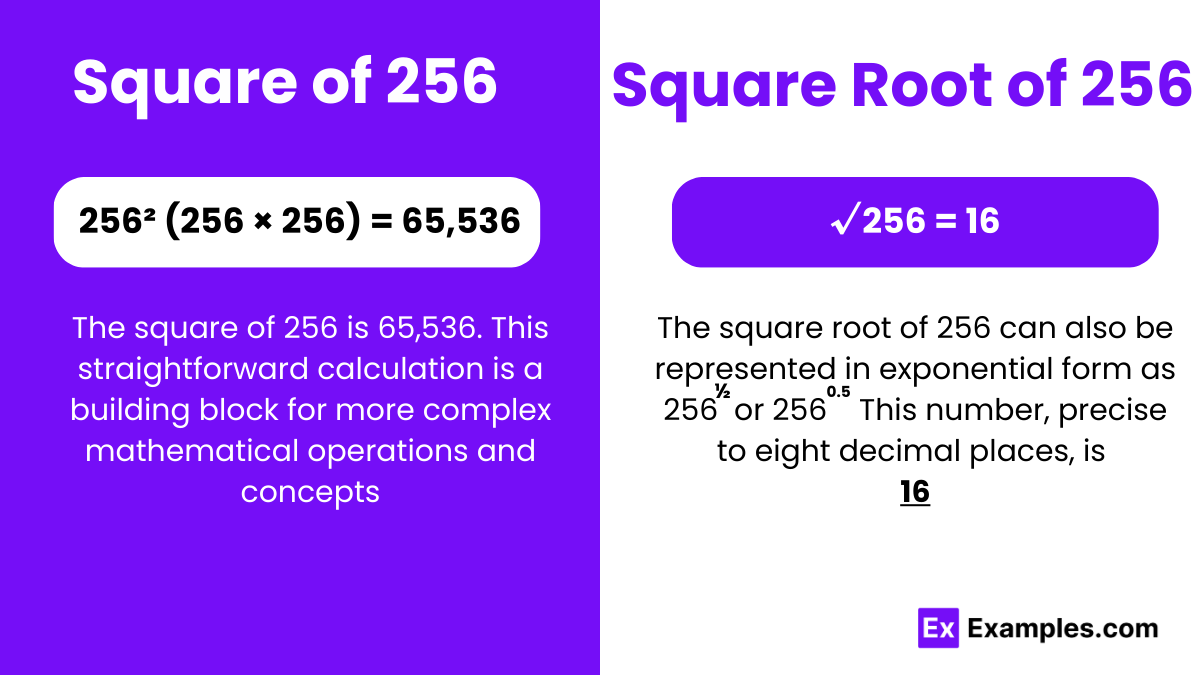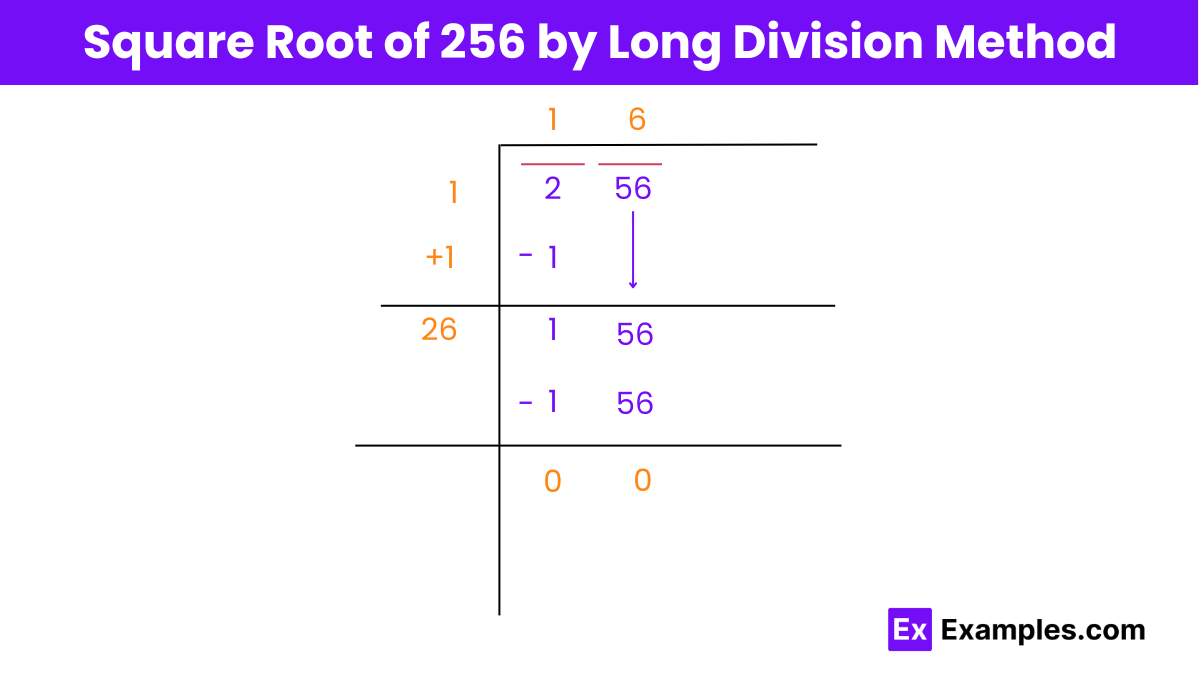What is 71 multiplied by 2?
142
143
144
145

To calculate the square of 256, you multiply 256 by itself:
256 × 256 = 65,536.
Therefore, the square of 256 is 65,536. Understanding how to find the square numbers is crucial in various mathematical fields including algebra, geometry, and data analysis, as it provides a foundation for tackling more intricate problems and concepts.
This is because 16 × 16 = 256.
Thus, the square root of 256 is exactly 16. This calculation is important in various mathematical and practical contexts, such as geometry, where it can represent the side length of a square with an area of 256 square units. It’s also significant in algebra and engineering, where understanding square roots helps in solving problems involving areas and other applications that require precise measurements.
Square Root of 256: 16
Exponential Form: 256^½ or 256^0.5
Radical Form: √256
This is because 256 is a perfect square, being 16 × 16 = 256. As a result, the square root of 256 is exactly 16, which can be expressed as a fraction 16/1, making it a rational number.
Prime Factorization Method:
Break down 256 into its prime factors, which are 2 × 2 × 2 × 2 × 2 × 2 × 2 × 2. Pair up identical factors and take one from each pair to get 2 × 2 × 2 × 2 = 16. Therefore, the square root of 256 is 16.
Repeated Subtraction Method:
Start subtracting consecutive odd numbers from 256 until you reach 0. Count how many times you subtracted, and that count is the square root. For 256, this method will result in 16 subtractions, indicating the square root is 16.
Estimation Method:
Since 16 is a known square root close to 256, you can estimate by finding a number close to 16 that squares to 256. By trial and error, you can quickly determine that 16 is indeed the square root of 256.
Calculator:
Use a calculator with a square root function to directly find the square root of 256, which is 16.
These methods offer different approaches to find the square root of 256, catering to various preferences and situations.

Here’s a step-by-step guide on how to find the square root of 256 using the long division method:
Step 1: Write 256 and group the digits into pairs from the right end. The first pair from the right is 56.
Step 2: Find the largest number that, when multiplied by itself, gives 2 or a smaller number closest to 2. In this case, it is 1. Perform the division and obtain the remainder.
Step 3: Bring down the next pair of numbers, which is 56. Multiply the quotient (1) by 2 and write it in the new divisor’s place, or the tens place. The number 2 will be placed in the tens place.
Step 4: Find the largest number that, when placed at the ones place with 2 at the tens place and multiplied by that same number, gives a result closest to 156.
Step 5: Obtain the next quotient place as 6. Now, we get our new divisor as 26 because 6 × 26 = 156. Complete the division and obtain the remainder, which is 0.
Thus, the process of division completes here, and we have found the square root of 256.
A perfect square is a number that can be expressed as the product of an integer multiplied by itself. In the case of 256, it can be expressed as 16 × 16, which equals 256. Therefore, 256 is indeed a perfect square.
No, 256 is not a perfect cube.
A perfect cube is a number that can be expressed as the product of an integer multiplied by itself twice. Since 256 cannot be expressed as the product of an integer multiplied by itself twice, it is not a perfect cube.
Text prompt
Add Tone
10 Examples of Public speaking
20 Examples of Gas lighting
What is 71 multiplied by 2?
142
143
144
145
If you divide 427 by 71, what is the quotient?
5
6
7
8
What is 71 times 10?
710
720
730
740
If 71 is divided by 1, what is the result?
0
1
71
71.0
What is 71 times 4?
284
290
300
280
What is the sum of 71 and 71?
142
143
144
145
If you subtract 71 from 100, what is the result?
27
28
29
30
What is 71 divided by 71?
0
1
71
71.0
What is 71 multiplied by 7?
497
500
510
520
What is 71 times 3?
213
215
223
220
Before you leave, take our quick quiz to enhance your learning!

